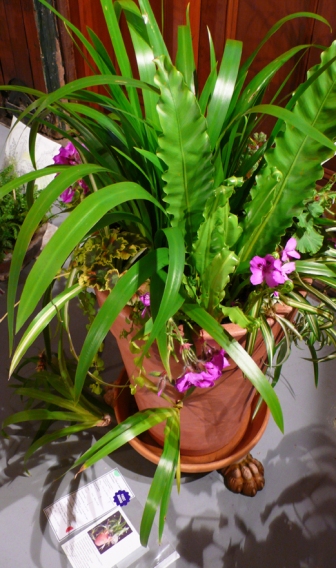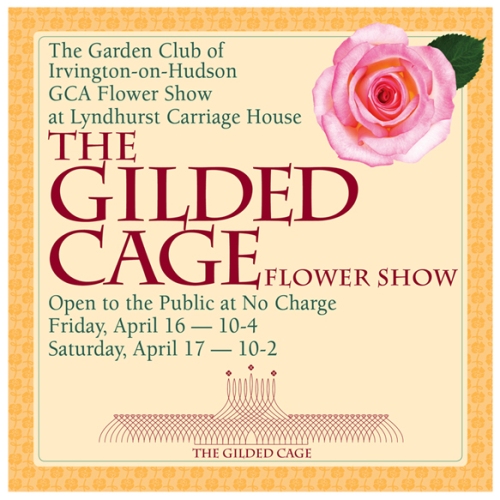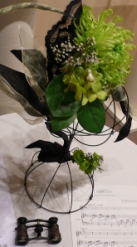The Garden Club of Irvington-on-Hudson’s GCA Flower Show last spring honored Lyndhurst and the Victorian era. The show was held at The Carriage House at Lyndhurst in Tarrytown, and was open to the public on Friday and Saturday, April 16 and 17, 2010.
The theme “THE GILDED CAGE,” a play on “The Gilded Age,” was inspired by the Gothic arches of Lyndhurst and its greenhouse, built by railroad tycoon Jay Gould, who made the Tarrytown landmark his family’s country estate in 1880.
“A GCA Flower Show is a competition judged by the rigorous standards of the Garden Club of America and exemplifies artistic and horticultural excellence,” said show chairman Nancy Stoer. “Our members worked for a year to present an outstanding show that included elaborate flower arrangements and horticultural specimens judged against ‘perfection’ as defined by GCA judging standards. Entries were prepared by members of our own club, who live in the River Towns, and GCA garden clubs throughout the tri-state area.”

Visitors enjoyed the "Victorian Wedding" arrangements staged on pedestals. The arrangements were designed as if for the 1913 wedding at Lyndhurst of Helen Gould, daughter of railroad tycoon Jay Gould, to Finley Shepard.
Floral arrangement exhibits included designs using flowers that were grown in the original Lyndhurst greenhouse (now restored and used by the Garden Club to cultivate plants for its annual plant sale in May); large arrangements suitable for a Victorian wedding; table settings for a card party on a Lyndhurst’s terrace overlooking the Hudson; and designs complementing hats in Lyndhurst’s extensive costume collection. Village of Irvington schoolchildren ages 8-12 made an exhibit of “tussie-mussies,” small hand-held bouquets expressing “the language of flowers.”

Pot-et-Fleurs featuring Neomarica caerulea (Fan Iris), Phyllitis scolopendrium ‘Undulatum’ (Hart’s Tongue Fern), Lysimachia nummularia ‘Goldii’ (Creeping Jenny), Oxalis triangularis (Purple Shamrock), and three kinds of zonal and scented Pelargoniums.
Horticultural exhibits included “Lord & Burnham Presents: Nineteenth Century Favorites,” which featured orchids, ferns and palms and cut specimens of locally-grown nineteenth-century favorites such as rhododendrons, magnolia, prunus, and blooming stems of narcissus and tulip bulbs. The challenge class was to grow from seed a Victorian favorite Pelargonium, ‘Black Velvet Rose.’ “Pot et Fleurs: In the Victorian Style,” featured large containers planted with with a minimum of three different species or cultivars reflecting the Victorians’ love of carefully planned excess. Special classes included topiaries and “glass houses” or terrariums.
Vistors viewed an exhibit of landscape and horticultural photography and a conservation/education exhibit that focused on the London Plane Tree or Sycamore, and showed how this magnificent tree has contributed to the ecology of the lower Hudson Valley.




 THE GARDEN CLUB OF AMERICA
THE GARDEN CLUB OF AMERICA